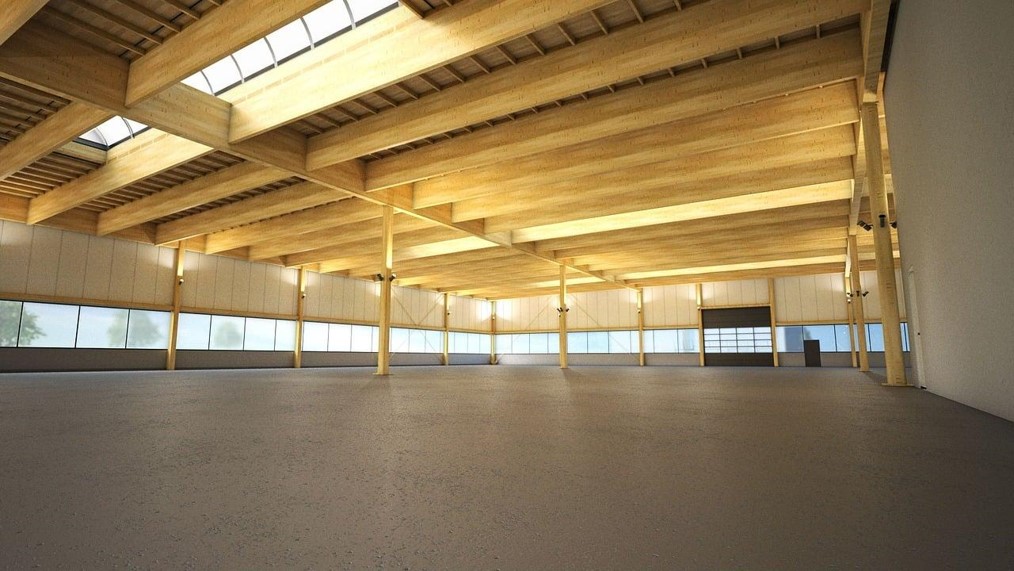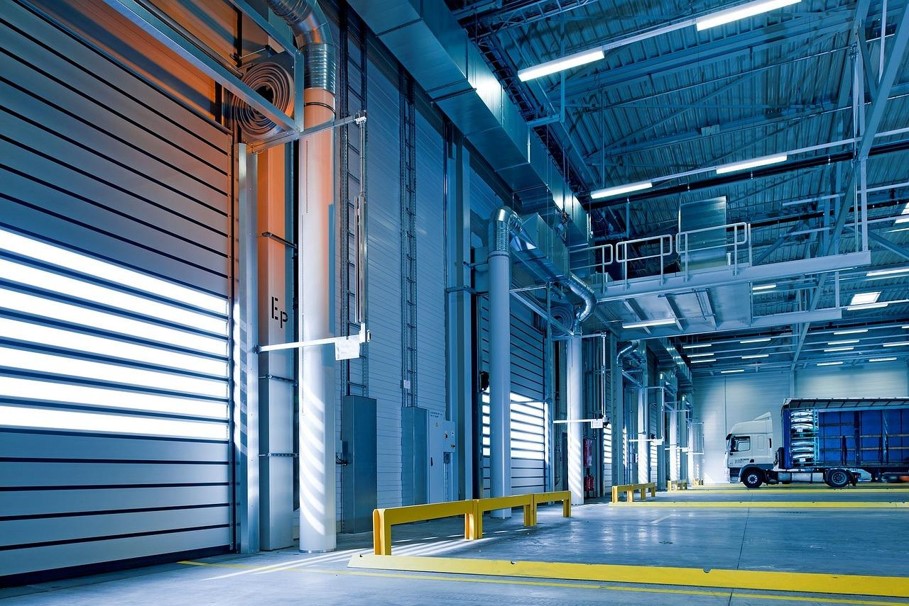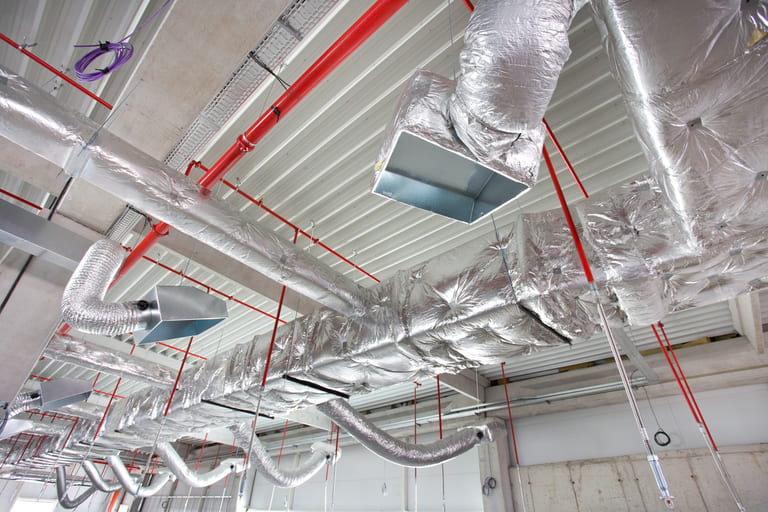

Taiyo Kogyo Column
What are the key points of WMS (Warehouse Management System) implementation? Explanation of advantages, disadvantages, introduction procedures, failure cases, and how to select the best one to improve logistics business efficiency.
2024.02.05

An increasing number of companies are considering the introduction of a WMS (Warehouse Management System) to improve logistics quality, productivity, and efficiency of warehouse management operations. However, there may be many companies that are considering implementing a WMS but are unsure of the differences between systems or how to implement a specific system.
In this article, in addition to what are the merits and demerits of WMS implementation, we will explain the differences between each WMS system, as well as the implementation procedures and methods.
What is WMS (Warehouse Management System)?

WMS stands for “Warehouse Management System,” and in Japanese it is called “Warehouse Management System.” By introducing WMS, it is possible to improve and automate warehouse logistics operations such as receiving, shipping, and storage. WMS is used in a wide range of industries to improve the accuracy and efficiency of warehouse management operations, which tend to be cumbersome.
▼ An overview of the WMS, its functions, and differences from the core system are described in detail below.
What is WMS (Warehouse Management System), the key to logistics efficiency?
Characteristics of different types of WMS systems

There are three types of WMS according to the type of implementation, and we will explain the characteristics of the three types of implementation that you should know before implementing a WMS.
cloud-based
A cloud WMS is a WMS system that is located in the cloud and used via the Internet. Since there is no need to set up and operate servers on the company’s premises or on its own, management labor and initial costs are greatly reduced. Running costs are also lower than other types of systems, making it easy to implement even for small warehouses. The system can be used both inside and outside the company as long as there is an Internet environment.
Cloud computing is pre-packaged with a variety of functions so that you can start using it right away, so it may be less customizable than the other two types of deployment. Note that it cannot be used in an offline environment.
on-premise (type)
An on-premise WMS is a WMS that is operated on a server installed on the company’s premises. Because of its excellent customizability, the system can be designed to best suit your company and industry, such as adding functions or changing specifications.
Keep in mind that the on-premise model requires an in-house server, so there are additional costs for initial installation, server management, and further customization, which increases the burden of operating and maintaining the WMS.
package type
A packaged WMS is a WMS that is operated by installing a server on the company’s premises, similar to an on-premise WMS. It differs from the on-premise type in that the functions and design of the WMS are done in advance.
The initial cost will be lower than the on-premise model because there is no need to design the system on-premise. However, because the available functions, design, and operability are basically pre-designed, customization is lower than with on-premise systems.
Advantages of WMS implementation

This section describes the benefits of implementing a WMS.
Leads to more efficient warehousing and shipping operations
In a warehouse under WMS operation, you can work while confirming product and location instructions, and you can also manage inventory by “use-by” date or “lot”. This greatly reduces the time required to search for needed items, which leads to more efficient warehousing and shipping operations.
Reduce human error and costs.
A WMS allows warehouse operations to be managed digitally through label (barcode) and scanner reading. Another advantage of a WMS is that it reduces human error, as conventional manual and visual input can be digitized. In the unlikely event of an incorrect operation that leads to an erroneous shipment, the system will issue a warning, which can be used to prevent errors from being missed during warehouse and delivery management.
Digitizing manual input and visual inspection reduces the number of work processes and thus the number of personnel to be deployed. This will also lead to a reduction in labor costs.
Ensure proper staffing
With a WMS in place, warehousing and shipping operations can be standardized. One of the benefits is that no special skills are required for warehouse management operations. Not only veteran employees with many years of experience, but also part-time and casual workers, as well as new employees and helpers who only work during peak seasons, can work with the same quality. This not only ensures the proper allocation of personnel, but also prevents the specialization of specific tasks.
The WMS allows for real-time monitoring of not only the warehouse, but also related information such as on-site progress and inventory control. It will make it easier to manage operations throughout the warehouse and to allocate appropriate human resources to each department.
Leads to location changes and space savings in the warehouse
WMS can immediately reflect changes in warehouse locations in the system. The advantage of this system is that it greatly reduces the time and effort required for modifying registration data and setting product inventory locations when changing locations.
Since registered data and product inventory can be easily changed, temporary storage space for inventory is no longer needed, which saves space in the warehouse.
Traceability and quality control are achieved
Another advantage of the WMS is that it can track the process of goods from receipt to shipment, ensuring traceability in the warehouse.
The WMS manages essentially all goods by barcode and can track every move of goods from one location to another and their storage history. Real-time inventory status can also be monitored to maintain appropriate inventory levels. By minimizing problems of overstocking and shortages, it can also prevent deterioration, damage, and loss of inventory in the warehouse, leading to improved quality.
Leads to increased customer satisfaction
Proper inventory control and receiving/shipping operations through the implementation of a WMS will also ensure the quality of products and goods, as well as quick shipments. This will lead to better quality products and improved customer satisfaction by enabling shipping and receiving according to their needs.
Disadvantages of WMS implementation

While WMS has many advantages, it also has disadvantages. This section describes the disadvantages that you should be aware of before implementing the system.
Costly to implement
When implementing a WMS, initial implementation costs such as system and server construction and design are incurred. In addition, training on how to operate the WMS is required for employees who will actually operate and use the WMS in their work. It is important to understand how much cost will be incurred before implementation.
Preparation and time-consuming from introduction to operation
Keep in mind that a WMS is introduced at the site in a variety of stages, so there is a lot of preparation and effort required from the time of consideration to the time the system actually goes into operation. If you are considering implementing a WMS, taking action as soon as possible will speed up the implementation process.
Common WMS implementation failures

Here are some examples of failed WMS implementations.
There was a mismatch between the system and the needs of the field.
WMS implementation may fail to meet the needs of the field, conversely, work may become more complicated, or the operability may be too complex to use.
For example, when a WMS changes the location of a warehouse, the staff who normally work in the warehouse may not be able to find where the items are, and this may cause problems in picking and inspection operations. It is important to select the most appropriate system based on the opinions of the field and an understanding of the problems, issues, and needs of the field.
Confusion arose because operations differed from location to location.
If a company operates multiple warehouse locations, there may be cases where some locations have a WMS and others do not. Even within the same company, there may be cases where work content changes depending on whether or not a WMS is in place, resulting in confusion. In addition to work content, the appearance of product forms and slips may differ between locations with and without a WMS, resulting in a situation where data is not reflected correctly and the status of the warehouse cannot be accurately grasped.
Lack of cooperation with related parties occurred.
A WMS requires cooperation not only with the warehouse management site, but also with related departments such as the IT and accounting departments. It is important to communicate the introduction of a new WMS to those around you so that they can work together.
Did not have the desired effect.
There are cases where a WMS has been implemented, but only the implementation costs and effort are incurred with no tangible results.
If you compare systems before you have a clear idea of the purpose of introducing a WMS and the issues and needs of your site, you may end up choosing a system that does not have sufficient functionality. It is important to clarify the purpose of implementing a WMS before moving on to the system selection process.
Points to consider when selecting a WMS

This section explains the key points to keep in mind when choosing a WMS in order to avoid making mistakes in its implementation.
Clarify the purpose of introduction
As mentioned above, the purpose of implementing a WMS differs from company to company. For example, the issues to be solved onsite also vary, such as the need to thoroughly understand inventory counts, to reduce personnel and costs, and to improve the efficiency of warehouse operations. After understanding the needs and issues onsite, clarify the purpose of WMS implementation and select the most appropriate system.
Choose one that fits your method of operation.
As mentioned above, there are three main types of WMS: cloud-based, on-premise, and packaged.
Select the most appropriate type of system based on how you plan to operate it in your company. For example, if your company uses the system outside the office frequently and you want to reduce the time and effort required for operation and settings, a cloud-based system is suitable. On the other hand, if you want to pursue an ideal WMS system for your company even if it costs more and requires more time and effort to operate, an on-premise system may be more suitable.
Assume costs and budgets.
When implementing a WMS, there are initial costs as well as server and system setup costs, monthly fees, and labor costs.
Assume monthly running costs; some WMSs are available for free, but their usable functions may be limited. It is recommended that you use free or trial services to confirm the functions and feel of the system, rather than to incorporate them into actual on-site operations, to help you choose the best system for your company.
Check for linkage with core systems and sharing of information with external parties.
Check to see if the WMS can be integrated with the head office’s core system. If it has a function that allows easy sharing of information with external parties, the time and effort required for data exchange can be greatly reduced.
Make sure you have a good support system.
It is also important to have a good support system for the WMS system. For example, some services and vendors provide support such as consulting with the vendor’s engineers, advice and consulting on general warehouse management, downloadable system manuals, and a consultation service for troubleshooting.
We recommend inquiring about the nature and extent of support when requesting information or requesting a demo.
Check company case studies and choose a good match.
Check out the case studies of companies that provide WMS. A WMS that has a proven track record of implementation in the same industry as your company is more likely to be a good match between your business and the system and lead to the expected results and resolution of issues.
WMS implementation procedures

This section describes the steps to WNS implementation.
Clarify your company's issues and objectives
Before implementing a WMS, identify the issues your company faces and clarify the purpose of implementation.
Clarifying the issues and objectives and sharing them internally will help you understand the specific functions you will need in a WMS. Note that introducing a WMS with unclear issues and objectives will lead to failures such as low cost-effectiveness and inability to verify the effectiveness of the WMS.
Select a candidate system
Pick up several WMS products offered and sold by various companies that have functions and features that can solve your issues. From the candidates you have selected, compare the price and functions of each system, and confirm whether or not they can be integrated with other systems used by your company.
Depending on the products you handle and the industry you are in, you may have special warehouse operations such as uncommon storage methods and logistics rules, so a WMS with only general functions may not be able to handle your company’s workflow. Check to see if the WMS has a track record of implementation in the same industry as your company.
Verify details with the system company.
Once you have selected a candidate WMS system, check to see if it is appropriate for your company’s size, how many issues it will solve, whether you are likely to be able to use its functions, and whether it will provide adequate support after implementation.
Perform a trial of the system
Try out the system through a trial or trial version to confirm actual usability and operability.
Make final decision on implementation.
The company will make a final decision on the implementation of the system after confirming the recognition of the system’s implementation within the company and calculating the actual expected cost-effectiveness of the system. Once the decision is made, a contract is signed with the system company and preparations for implementation are made.
Getting ready to implement the system.
Prepare for the introduction of the system within the company by preparing a user manual, training for internal staff, etc. Immediately after the introduction of any system, there is a possibility that there will be some confusion in the field. Therefore, it is important to be well prepared, for example, by preparing in advance a system that allows at least the minimum necessary operations to continue even in the event of confusion.
After the introduction of the system, it is also important to measure the effectiveness of the system, such as how much work efficiency has been improved, how many errors have been reduced, and whether labor costs have been reduced, and to establish a system to visualize cost-effectiveness.
WMS implementation is a great opportunity to review warehouse operations

The introduction of a WMS is an excellent opportunity to optimize logistics and warehouse operations, and many companies may be considering the introduction of other systems and initiatives to revamp their warehouse operations at the same time they are implementing a WMS.
Taiyo Kogyo handles products recommended for improving the efficiency and optimization of warehouse operations, including tent warehouses. We can also propose products that will help solve problems related to your warehouse operations, so please take a look.
Click here for a list of Taiyo Kogyo Corporation’s products and services, or click here to request information materials.
https://www.tentsouko.com/
Selecting the best system is important for WMS implementation
In this article, we introduced how to select and implement a WMS system, which offers many advantages such as solving on-site problems, improving the efficiency and quality of warehouse operations, and reducing labor costs. However, unless you understand the issues and needs of your warehouse operations and select the most appropriate system, it will not take root after implementation.
Tent Warehouseへの
Contact us

What you need to know when building a warehouse
We packed it all in.
Clues to solving the 2024 problem
I want to build a warehouse in an economical way.
Which type of warehouse should we build?
I want to learn the basics of warehouse construction anyway.
I'm concerned about the 2024 problem, but I don't know what to do about it.
Related Articles
- TOP>
- Taiyo Kogyo Column>
- What are the key points of WMS (Warehouse Management System) implementation? Explanation of advantages, disadvantages, introduction procedures, failure cases, and how to select the best one to improve logistics business efficiency.








